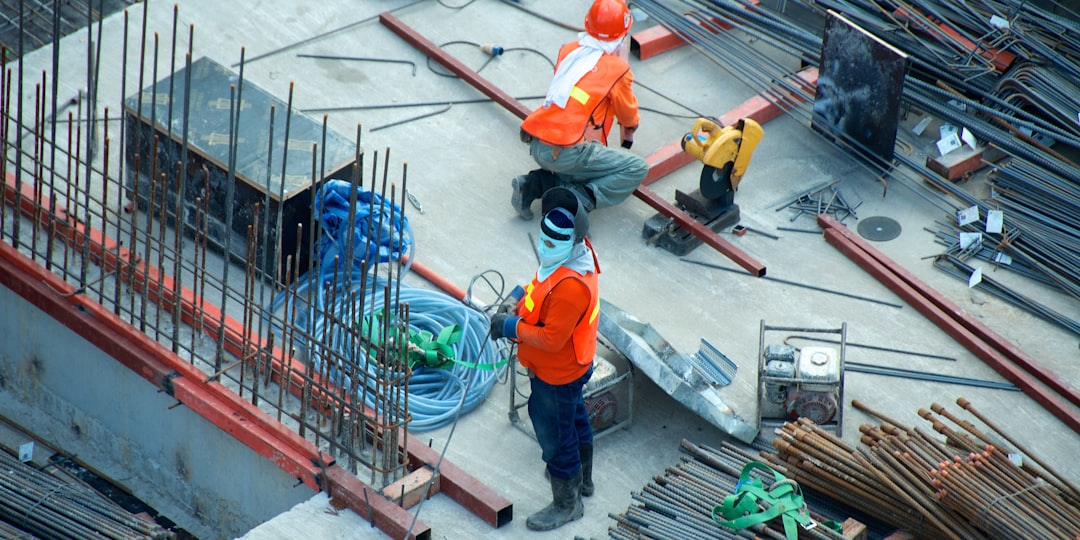

Lone Working Risk Assessment
Lone workers are those who generally work by themselves without close or direct supervision. In construction this is very common especially for trades such as electrical repairs, plumbing, lift repairs, builders, field service staff, painting or decorating for example.
Typically a company will have a lone worker safety policy covering the policies and procedures employees must follow to ensure they are protected from any specific hazards or risks. It will also outline the responsibilities of both the employer and the employee so everyone can work safely.
What Is Classed As A Lone Worker?
If an employee cannot be seen or heard by a colleague, then they are an alone worker. This also includes workers who work from home.
When identifying lone workers, it is to overlook certain situations and 'hidden lone workers' is something to be aware of:
- A single employee working late alone
- Employees left alone in different parts of a building
- Employees travelling alone during work hours
- Employees are left alone while other employees take their break
- Those working on the same site but out of sight and sound of an employee
- Anyone working alone but alongside members of the public or populated locations
- Employees members who work from.
How Can Employers Support Lone Workers?
- When carrying out risk assessments involve your employees
- Periodically check that your employees remain at their correct location/when the lone worker should check-in and how often
- Emergency contact for the lone worker
- If lone working is not able to be conducted safely, extra support should be provided
- If you are contracted to another company, that employer should be informed of the lone worker's risks and controls that are in place.
- Procedures on how and when the lone worker should use in emergency situations
- Review risk assessments annually or when there are changes in procedures
Are Lone Workers Risk Assessment a Legal Requirement?
Risk assessments for lone workers are a basic legal obligation that should be carried out for all your employees. If you have five or more employees, you are required by law to document and preserve a record of your risk assessment.
A lone worker risk assessment should include:
- The hazards present/identified
- Who might be of harm and how
- The procedures in place to prevent any further hazards/risks
- What further action you will take to reduce the risk
- Date/sign the report and when the next review is due
Why Is Lone Workers Policy Important?
Construction sites are one of the most dangerous places for people in the UK, with roughly 60,000 injuries every year and 40 deaths it is very important that Health & Safety is constantly monitored to put your business and employees in the best position possible.
There are no specific Health & Safety regulations relating to lone workers however as an employer you have a duty of care to employees ensuring their safety is your No 1 priority. Lone Workers Policy is slowly becoming more popular within the construction industry which is a start although not good enough, it needs to be a staple in all construction companies with Lone workers.
If you need any support with Lone Worker Policies or Health & Safety concerns, speak to the SaintVA team today who can handle all your H&S policies for your company.

The Construction Survival Guide
The only book you need to start up your construction business! The CSG becomes your new handbook offering everything that you need in order to create a successful construction business!
Claim Mine!Claim Mine!Frequently asked questions
This article has been provided for information purposes only. You should consult your own professional advisors for advice directly relating to your business or before taking action in relation to any of the provided content.
PS. Whenever you are ready, here's how to grow your construction business...
1. Join our Facebook Group which built completely for businesses within the construction industry. Real people, real support. - Now also available on LinkedIn.
2. Keep up to date with Construction Insider Providing you with industry insight, tips & tricks and much more to make sure you are ahead of your competitors!
3. When you are ready, Become a Saint Global client, and we will provide you with the highest quality solutions to effectively scale your construction business. Book your meeting here!

Written by the team at:












.jpg)



